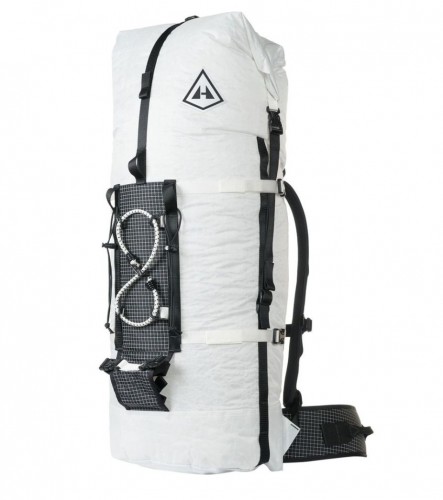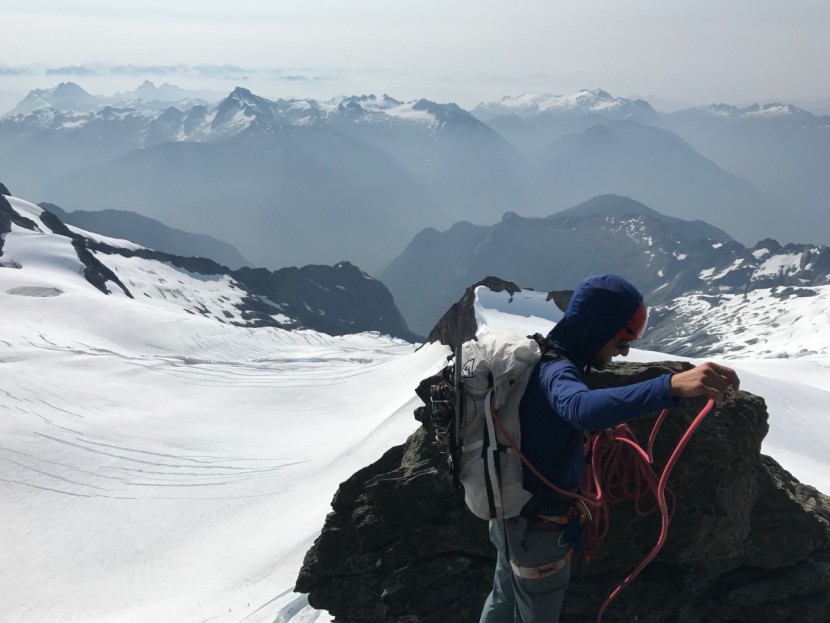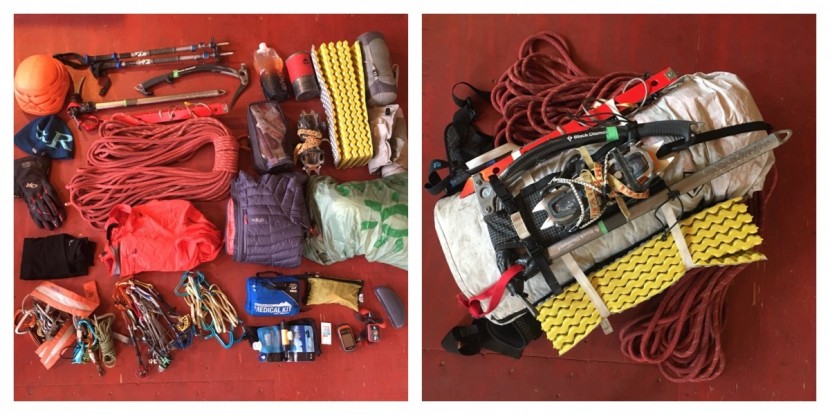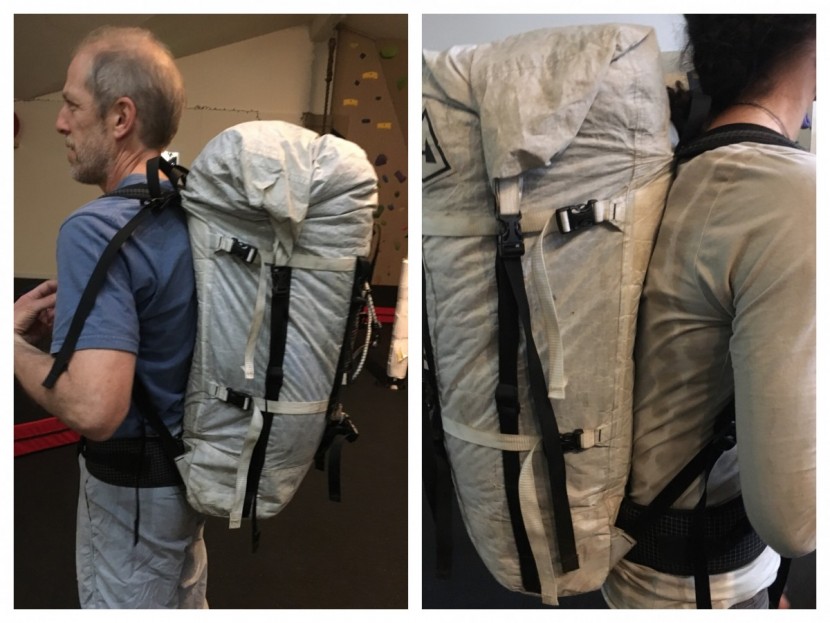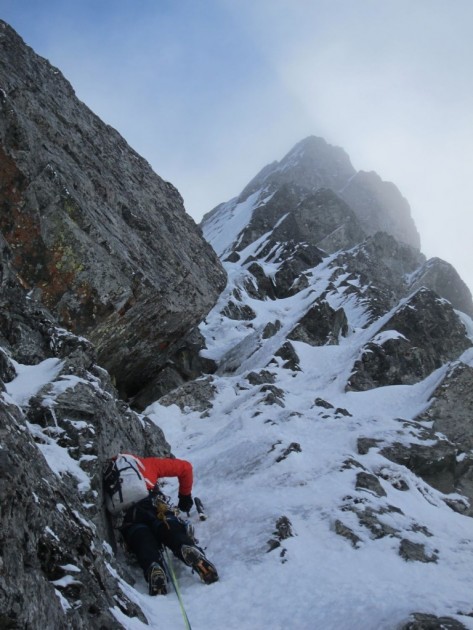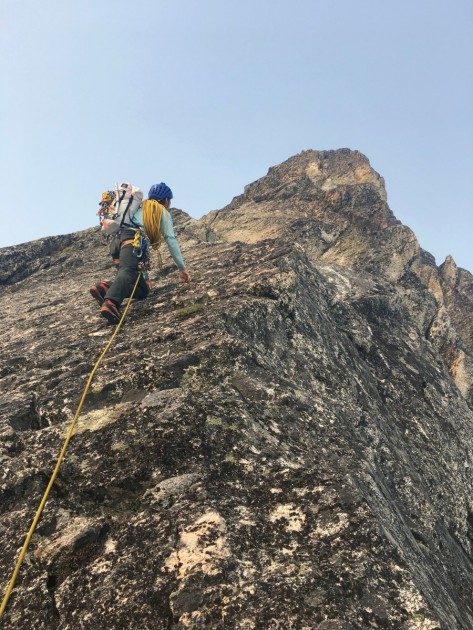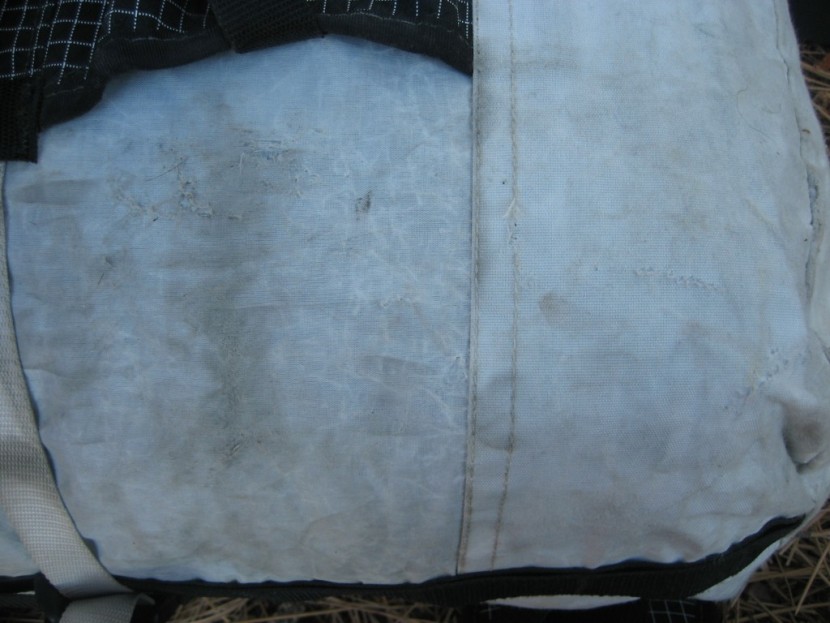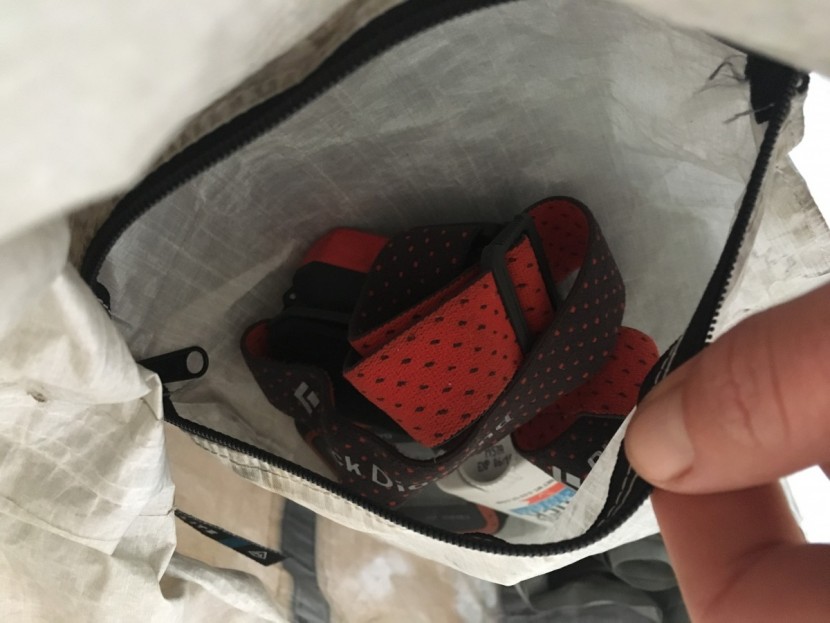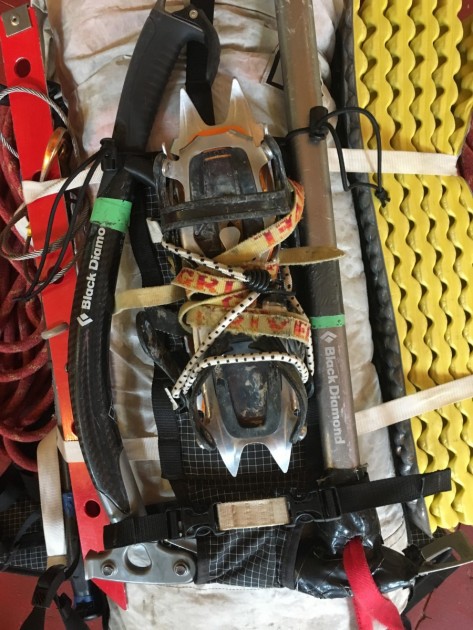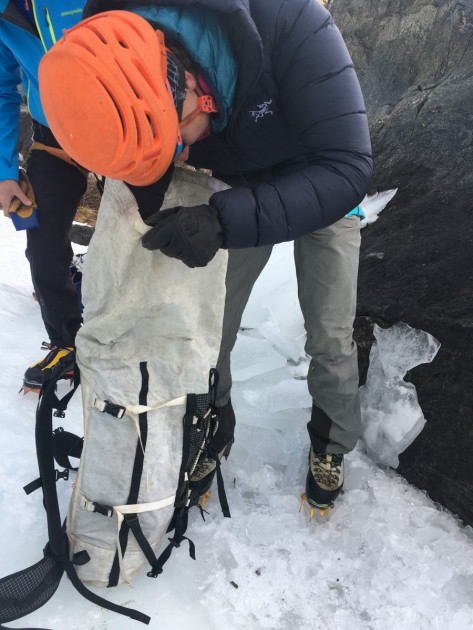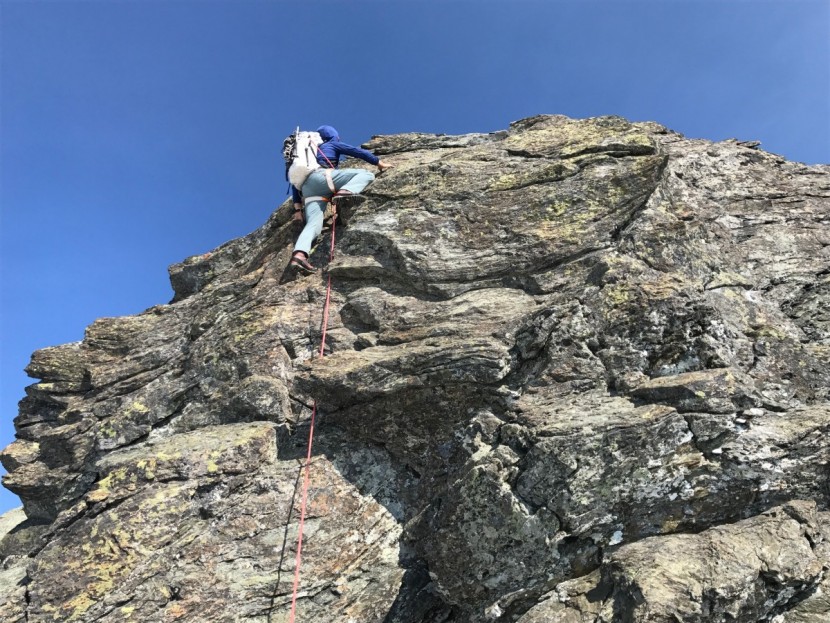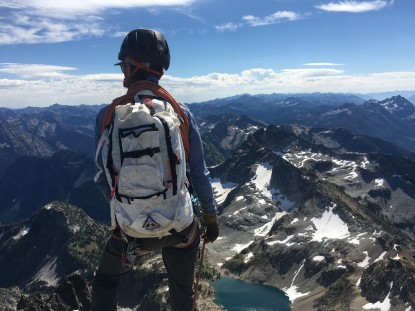Hyperlite Mountain Gear 3400 Ice Pack Review
Our Verdict
Our Analysis and Test Results
The HMG 3400 Ice Pack is remarkable in many ways, scoring top marks in all categories but durability. If you're not a rock specialist, this could be a great pack for you. It blends true waterproofness and excellent comfort into a lightweight, well-featured climbing pack.
Weight-To-Volume Ratio
The Hyperlite pack landed in second place in this review, scoring very well for weight to volume ratio. It is made of extraordinarily lightweight Dyneema composite (formerly called cuben fiber). The features are simple and streamlined, which also saves weight. This pack also has a highly expandable roll-top closure, so it is easy to keep cramming stuff inside. The roll-top can clip together at the top for full loads, but it is designed to clip to the sides of the pack—then the roll-top also functions as a cinch to help compress the pack and keep the load's center of gravity lower.
Comfort
Hyperlite designed a stunningly comfortable pack, especially for one without load lifter straps (the straps on top of the shoulder straps that help bring the backpack closer to your back). Arc'teryx designed their pack similarly, without load lifter straps, but it is not quite as comfortable as the Hyperlite pack.
The Hyperlite hip belt is also more fully featured—it has light but firm padding, offering much more substantial support and asserting itself as a more fully featured and versatile pack than the Arc'teryx Alpha FL 45. One advantage to the complicated roll-top/top strap system is that it compresses exceptionally well. We like how this pack climbs and think this compression makes a difference. When purchasing the Ice Pack, make sure to measure your torso length and order the appropriate size.
No problem - you can add those for an additional $10. Hyperlite has recently improved their hip belt pockets, increasing their size as well as the zipper placement for easier access.
The only problem our testers had with the Hyperlite is its breathability. It is an entirely waterproof pack (except when it gets holes in it, see the next metric), but that also means that having that fabric against your back can make things slightly swampy on hot, humid summer climbs or approaches to basecamp. We sent this out with some of our less sweaty testers, and they had the same feedback. Bummer.
Overall we think the Ice Pack is exceptionally comfortable for its intended use—as a go-to ice climbing pack. There are two (removable) aluminum stays in the Ice Pack, which make for a lightweight but very efficient frame. The hip belt is relatively low profile, but substantial enough to take most of the load off the shoulders. Of the packs that didn't have a lot of padding on the hip belt and shoulder straps, this one is the most comfortable. This model is second to the Arc'teryx Alpha FL in weight-to-volume ratio, but the cost of removing that extra suspension weight can be felt when the Ice Pack is loaded with more than 35 pounds.
Durability
Durability ended up being the Achilles heel of the Hyperlite pack. It scored the lowest in this review at 2 out of 10. Yikes. That still didn't hurt the pack much, as it scored fourth overall in the review.
This pack came back from our climbs with some small holes in it, which prompted us to do some research. It does appear to be a relatively common issue with this fabric—the good news is Hyperlite seems to have excellent customer service and will help you out as much as they can.
That said, excellent customer service is not going to help you when you're caught out in an afternoon thundershower with a bunch of small holes in an otherwise waterproof backpack.
Hyperlite addresses the durability issue of the Ice Pack by using higher denier rated Dyneema on the bottoms and a more durable fabric on the hip belt, shoulder straps, and crampon patch. We think the sides could use more durable material, too. For a much more durable option, check out the Alpha FL from Arc'teryx, or the more fully featured Patagonia Ascensionist which is still very lightweight, but includes a few more convenient features for climbing, and boasts some of the best durability in this review both for fabrics used and sewing and construction. Another great option that is closer in size at 52 liters is the Osprey Mutant 52. This is a very comfortable, high performance, and durable backpack in the 50 liter size range, with features that are a bit easier to use, and improved accessibility over the Hyperlite backpack.
Versatility
If you love the Arc'teryx Alpha FL 45 but find yourself frustrated that it doesn't have side straps or a padded hip belt, the Hyperlite Ice Pack might be the perfect solution. It is a close second to the Alpha for its light weight, but it has several more options to attach a foam pad, pickets, etc.
However, some of our testers were more annoyed by the lack of a lid (or "brain") in this pack than in the Alpha FL. We think this is mostly because Arc'teryx put a small zippered pocket on the outside of the Alpha FL, whereas Hyperlite put the same pocket in a hard-to-reach spot inside the pack, rendering it basically useless. We often stashed our headlamp, keys, and a couple of snacks in this pocket—all things you want quick access to when you need them. The Patagonia Ascensionist addresses both of these issues with an easily accessed zippered pocket in the top of the pack.
The versatility of the HMG Ice Pack is also related to its durability problems. As we mentioned above, the Cuben fiber/polyester hybrid fabric that HMG uses is robust and waterproof. However, its resistance to abrasion is worse than the materials used on many of the other packs in this review. As a result, the Ice Pack performs much better for winter climbing than it does in the warmer seasons since plopping your pack down on some snow is much more helpful to the fabric than plopping it down on some sharp rocks.
That being said, we find the 3400 Ice Pack to be an excellent size for winter climbing because the pack accommodates a variety of loads with ease and is light enough to be used for single day climbs.
Its incredible comfort on the approach also makes it very good for hiking—but be mindful in warmer climates. The material is not breathable at all (because of its waterproofness), so even those climbers who don't tend to get sweaty backs might find themselves a bit more damp than usual.
Features
The first thing that stood out to us was the hardware-store-variety bungee cord on the front of the pack which serves as the crampon attachment. Not initially impressive. For an ultralight mountaineering backpack, this seemed like an ironically heavy non-sequitur. Ultimately, we went full circle in our judgment of this feature. We thought it looked cheesy, but then we forgave the oversight because the rest of the pack is so well designed—and then after some trips, we found ourselves annoyed with this bungee.
When we were not carrying crampons, we would try to secure the bungee so the curved hooks wouldn't catch up on things as we hiked or climbed with the pack. But they would always come loose. At best, this looked sloppy, and at worst, it got in our way. Neither scenario is a deal breaker, just annoying. For a pack at this price point, we do think there must be a smoother way to attach crampons.
The Ice Pack has some features that are great, and others that are not great. The ice tool attachments are secure, simple, and easy to use. Each side of the pack has two standard compression straps and one daisy chain. The lack of load lifter and stabilizer straps (see “Comfort” above) keeps things simple.
The padded hip belt is removable with no option for a minimal webbing strap to secure the load when the padding is removed. It comes in one of two possibilities — the standard belt with gear loops, or with small stash pockets (one on each side). We like the stash pockets for hiking, but they get in the way when climbing if the hip belt is not removed.
The interior of the pack has one hanging pocket that is great for smaller items but is quickly buried by the contents and was often hard to access.
We were not big fans of the closure system on the Ice Pack. We found it makes accessing anything inside the pack a bit of a chore; forget about digging out that snack while you're belaying your partner. It consists of a velcro roll top and a “Y” shaped top compression strap. We had to unbuckle three buckles (one on the top strap and two on the roll top) and then separate the velcro on the roll top to open the pack. Then, we had to burrow through the long tunnel of fabric to get to the contents, and inevitably get caught on the velcro on our way in or out.
While this system is extremely weatherproof, our testers found it isn't worth it, as there are other ways to keep pack contents dry without compromising the ease of access. All of the buckles don't have to be used; climbers can remove the straps that secure the ends of the roll top and buckle it to itself. This improves access slightly but still leaves you with the velcro, which is hard to open, particularly with gloves on. Our number two wish for this pack is for some webbing pull tabs to help us open the velcro. Our number one wish is that it was offered with a traditional drawstring closure.
For a feature set that is more user friendly, check out the Osprey Mutant 52.
Best Application
This pack is most at home ice climbing and alpine (snow/ice) climbing, particularly in foul weather.
Value
This pack is on the expensive side. If money isn't a big deal, this could be a good pack to have in your quiver. Compared to other packs made of the various Cuben fiber/Dyneema concoctions, it's actually reasonably priced. See our Price Versus Value Chart to compare performance and retail price.
Conclusion
The Hyperlite Mountain Gear Ice Pack is a niche competitor. It's great for snowy or icy alpine terrain. If you find yourself out in the rain a lot and liking it, this could be a good pack for you. We also really like that Hyperlite Mountain Gear has been refining and improving this pack through the years, which says a lot about the brand. If you're looking for one pack to do everything, year-round, and survive for a while, consider a more durable option like the Arc'teryx Alpha FL, or a more versatile pack like the Patagonia Ascensionist.


